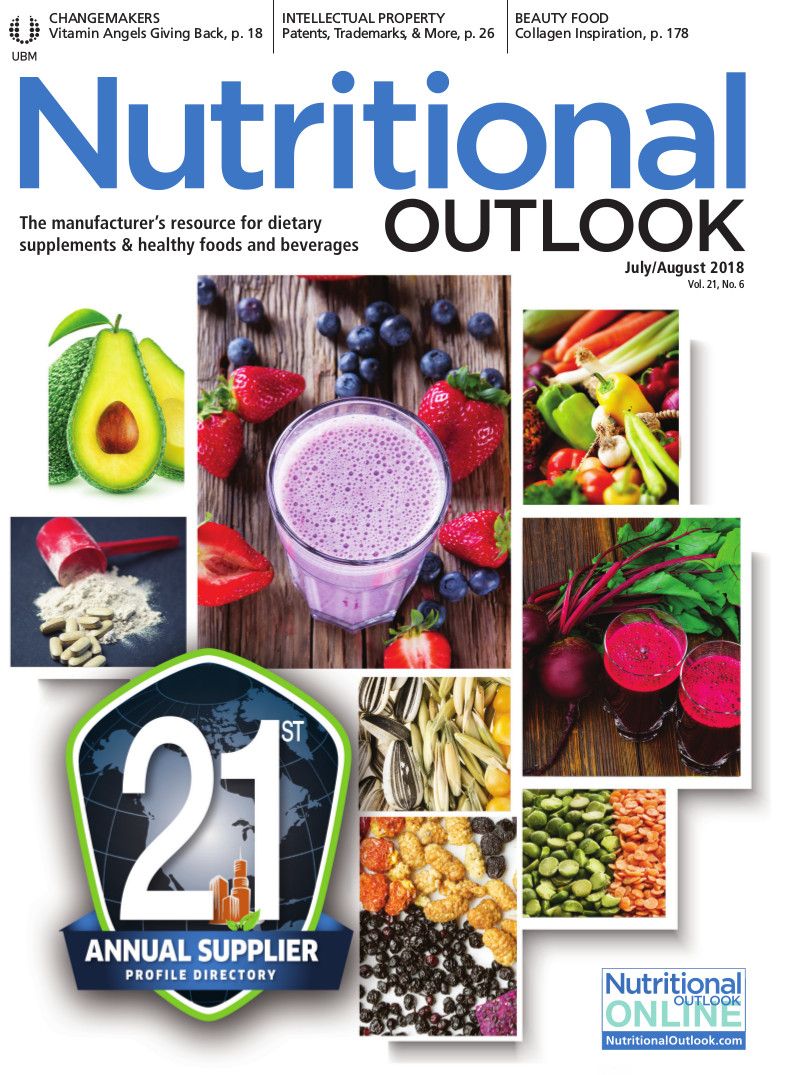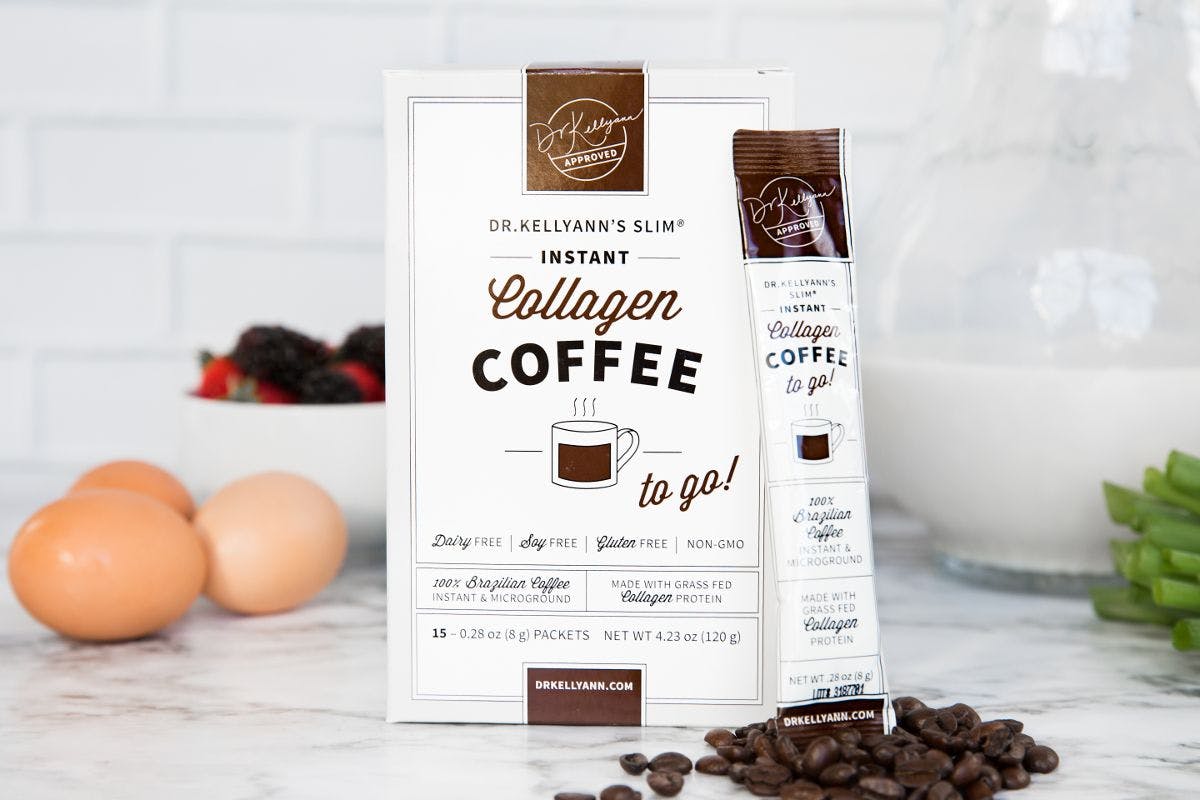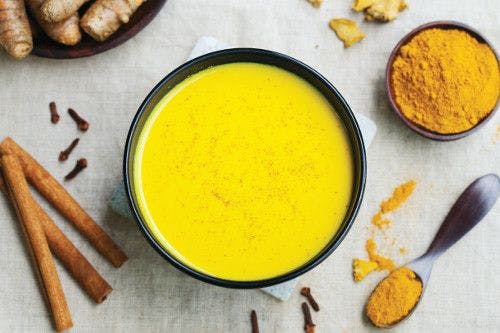Intellectual property in nutraceuticals: Patents, trademarks, and trade secrets
Here’s what you need to know to protect your property.
Photo © Shutterstock.com/jovan vitanovski

By Ari Feinstein, Jason Jardine, and Caleb Bates of Knobbe Martens
Globally, the nutraceutical industry is worth more than $200 billion. It is a dynamic industry with a growing rate of large-scale mergers and acquisitions. For example, in August 2017, the private equity firm HGGC acquired dietary supplements manufacturer Nutraceutical International Corporation in a transaction valued at approximately $446 million. A few months later, Innophos Holdings purchased ingredient supplier NutraGenesis for $28 million.
Intellectual property rights are an important consideration in the nutraceutical industry. Investment in intellectual property rights, such as patents, trademarks, and trade secrets, both protects nutraceutical innovators from competitors and makes companies more valuable and attractive to investors.
Apart from protecting their own intellectual property, nutraceutical companies also should be aware of the risk of having the intellectual property rights of others asserted against them. In 2013 alone, ThermoLife International filed 117 patent infringement suits. Similarly, the Tawnsaura Group brought nearly 100 patent infringement suits over a 13-month period. Thus, prior to launching a new product, a nutraceutical company should consider: 1) the types of intellectual property protection that may be available-namely, patents, trademarks, and trade secrets, and 2) whether there are any freedom-to-operate issues.
Patent
There are many different ways to cover a soon-to-be-launched nutraceutical product with patent protection. Patents may be obtained on a new chemical compound or a new use of a known compound or a new combination of known compounds. Processing or manufacturing techniques may also be patented. Patents for new and non-obvious compositions, formulations, methods of use, or manufacturing techniques are referred to as “utility patents.” A “design patent” may also be obtained to cover the ornamental features of a new and non-obvious design-for example, for bottles or other packaging.
Before sharing information with anyone outside the company (who has not signed a non-disclosure agreement), the company should consider filing a “provisional” patent application. Provisional applications are not required but may provide potential benefits to innovators. In particular, provisional applications allow a company to hold its place in line for up to 12 months while determining whether there is sufficient market demand for the innovation through public disclosures that could impact its ability to obtain patent rights. This 12-month period also provides time for additional research and development that may be needed. Within 12 months of filing, a provisional application must be converted to a regular “non-provisional” patent application. Filing a provisional application can also be less expensive than a formal non-provisional patent application, which must meet certain requirements. In contrast to a non-provisional application, a provisional application could consist solely of a research proposal or a presentation for potential investors.
Once a non-provisional patent application is filed, the U.S. Patent & Trademark Office’s (“PTO”) inquiry into whether the invention is patentable will begin. Although this process may be accelerated with the payment of certain fees, typically it will take several years before the negotiation between the PTO and an applicant is complete, ideally resulting in an issued U.S. patent.
Importantly, not all inventions can be patented. Abstract ideas, natural phenomena (including natural products), and laws of nature cannot be patented. However, it is possible to obtain patents on subject matter that relates to a natural phenomenon, but that also, for instance, transform the natural phenomenon by adding some “inventive concept.” In a recent case, a federal district court determined that a patent claim reciting a dosage range of beta-alanine was invalid because beta-alanine is a natural phenomenon and ingesting it in a supplement form is not “inventive.”1 Alternatively, a transformative inventive concept related to beta-alanine could include, for example, use of beta-alanine to treat a particular condition that was not known or expected to be treatable by beta-alanine, a composition of beta-alanine that provides superior properties (for example, increased absorption), or a composition of beta-alanine with another ingredient that provides a synergistic effect (either for the beta-alanine or for the other active ingredient). As another example, the hydrolysis of a protein in acid is not, by itself, patentable. However, a method of increasing the rate of protein hydrolysis in water with a catalyst (a new and non-obvious method) may be patentable.
Another statutory requirement is that the invention must be new. For example, if an old patent or other publication discloses the subject matter for which a patent is sought, then the subject matter is not new and is, therefore, unpatentable. As simple and straightforward as this sounds, there are many nuances to this analysis. What if an old patent discloses a chemical formula with variables and, after substituting the variables in every way possible, the formula represents 100 or 1,000, or 1,000,000 different chemical compounds, but only 15 compounds were actually synthesized and described in the patent? In that case, even if the company’s nutraceutical product is one of the many undescribed chemical compounds in the patent, the product may still be deemed “new” if it could not be “at once envisaged” from the old patent.2
The company’s invention must also not have been obvious to make, based on the knowledge in the field at the time of invention. Obviousness is a complicated, fact-intensive area of patent law that involves looking at the differences between the claimed subject matter in the patent application and what was previously known in the field. Specifically, the relevant inquiry is whether a “person of ordinary skill in the art” would have viewed those differences as obvious before the patent application was filed. For example, a small modification to a known chemical compound that does not yield any surprising benefits would be considered obvious (such as changing a methyl group to an ethyl group). On the other hand, any suggestion in the nutraceutical art that, for instance, teaches that a purification technique or chemical formulation previously used in the field is unsafe or unsatisfactory for some other reason could weigh in favor of non-obviousness.
Given the importance of patent rights and the dynamic nature of the nutraceutical industry, strategic patent filings are a critical component of creating and maintaining value in this field. An attorney specializing in patent law can help a company determine what aspects of its innovations may be protectable with a patent.
Trademark
The primary objective of trademark law is to prevent consumer confusion about the source of goods being sold. Effective use of trademarks can also confer a competitive advantage on a business by generating goodwill with consumers. Businesses may obtain trademark protection on various aspects of a good-including designs, phrases, colors, and symbols-that help identify and distinguish the source of their goods from the source of others’ goods. A nutraceutical company may trademark various aspects of its labeling and packaging, including the design of the container and label(s), as well as the company logo and slogan.
Mere use of a mark is sufficient to accrue some trademark protection. However, this “common law” protection is limited. Specifically, the company’s rights will be geographically limited to areas of the mark’s use or reputation. So, for example, a company selling a trademark-protected post-workout supplement exclusively in Los Angeles may not be able to enforce its common law rights in San Francisco. Trademark registration-at the state and federal levels-is relatively inexpensive, and is a quick way to strengthen a company’s trademark rights. State registration gives the registrant trademark rights within that state, while federal registration provides the registrant trademark rights throughout the United States, its territories, and its possessions.
Similar to patent infringement suits, trademark infringement suits may involve challenges to the validity of the trademark-meaning the mark is not something that should ever have received trademark protections. The strength of a trademark-i.e., the chance its validity will be upheld by a court-is essentially based on whether the mark is “fanciful” or “arbitrary,” “suggestive,” “descriptive,” or “generic.” A “fanciful” or “arbitrary” mark that bears no relationship to the type of goods, such as EXXON for gasoline, is the strongest type of mark. A “suggestive” mark that is somewhat related to (“suggests”) the type of goods, such as “Whirlpool” for washing machines, is slightly less strong. A “descriptive” mark is one that describes a function, characteristic, feature, purpose or use of the goods or services. For example, “White-out” for a white fluid used for correcting printed text is descriptive. “Descriptive” marks are weak because they interfere with competitors’ abilities to describe their similar products. Finally, generic marks, such as “Apple” for apples, are unprotectable as a trademark.
Nutraceutical companies should take advantage of these protections. An attorney specializing in trademark law can help a company determine what aspects of its product names, logos, and packaging may be protectable. In the crowded nutraceutical marketplace, protectable marks can help a company positively distinguish itself in the eyes of consumers and prevent competitors from benefiting from customers’ goodwill.
Trade Secret
The primary objective of trade secret law is to protect a company’s decision to maintain a valuable business secret from which it derives a competitive advantage in the market. A “trade secret” generally refers to information that derives independent economic value from being kept secret and is subject to reasonable efforts to maintain its secrecy. In contrast to patent or trademark applications, trade secrets do not require registration, do not expire, and never become public (unless independently discovered by others or improperly misappropriated). However, if a competitor “reverse engineers” a company’s trade-secret process, or independently develops the process, the company has no recourse to prevent their use of the (formerly) secret information.
Similar to trademark law, trade secret law is two-tiered, at the state and federal levels. Most states have signed onto a uniform set of trade secret laws, called the Uniform Trade Secrets Act (“UTSA”). UTSA’s definition of a “trade secret” mirrors the definition above but clarifies that protectable information includes formulas, patterns, compilations, programs, devices, methods, techniques, and processes. However, states have implemented UTSA in different ways, and it is important to consult an attorney for legal advice to understand the scope of trade secret law in the relevant jurisdiction. A recent federal law, the Defend Trade Secrets Act (“DTSA”), similarly defines “trade secrets,” but there are currently few examples of courts interpreting the DTSA. While both state and federal trade secret laws provide remedies, including damages, for trade secret misappropriation (e.g., corporate espionage or former employee disclosures), an important limitation of trade secret protection is that once the secret is out-even through improper means-the protection is gone.
There are certain ideas or types of information a nutraceutical company may wish to maintain as trade secrets instead of pursuing patent protection. For example, a company may choose to protect manufacturing methods as trade secrets if it would be challenging for competitors to determine the method used via reverse engineering. In contrast, if one obtained a patent on the manufacturing method, the method would necessarily be disclosed to the public. Although the patent would provide a right to exclude for a limited time period, it may be difficult to determine whether a competitor is using the patented method or some other method.
Information about which suppliers provide which ingredients may also be kept as a trade secret. Further, perhaps there is information about the physiological mechanism through which a supplement enhances a particular physiological function that is a trade secret. A company could use that information to more intelligently select ingredients, manufacturing methods, and advertise its product-without, of course, sharing the secret information.
A company may also formulate a proprietary blend and keep the blend a trade secret. While the United States Food and Drug Administration (FDA) generally requires the amount of each ingredient to be displayed, only the total amount of a blend of dietary ingredients needs to be displayed.3 Therefore, the amounts of the individual ingredients within the blend are eligible for trade secret protection-so long as all other requirements are met. However, if a proprietary formula can be reverse engineered, the secret may not last long, and patent protection may be preferable.
Some states also protect “negative know-how.” “Negative know-how” refers to information discovered during development about what does not work. If a nutraceutical company has tested 1,000 different formulations, information regarding what does not work could be even more valuable to a competitor than information regarding what does work.
Each of the aforementioned examples derives some value from being kept secret. To qualify as a protectable trade secret, the company must also take reasonable efforts to maintain the secret. This can include, for example, password-protecting all documents relating to the information, limiting the number of individuals at the company with access to the information, and ensuring that all individuals with access have signed documents acknowledging the information is a trade secret and is not to be shared with any unapproved individual.
Trade secrets and patents provide distinct benefits, and accordingly, nutraceutical companies must carefully weigh the benefits of each type of protection.
Freedom to Operate
A critical component of launching a new nutraceutical product is determining whether the product has freedom to operate (“FTO”). An FTO determination requires a detailed legal analysis of whether a company can market its new product free of potential liabilities to third parties. This analysis may include running searches to identify patents and trademarks that could be asserted against the company based on the sale, offer for sale, use, and/or manufacturing of the product in the U.S. The company should also consider reviewing any and all contracts its suppliers have entered into to understand their liabilities and any restrictions on their ability to sell. Additionally, it is important to review all statutory and regulatory requirements, at the federal, state, and local levels, regarding the sale of dietary supplements, distribution, advertising, and quality control (and any other activities in which the company will be engaged). There is no guarantee that this analysis will unearth every potential FTO problem. That said, a thorough FTO analysis will allow a company to make a name change, adjust its labeling, or make other modifications to its product to potentially mitigate its liability and protect its reputation. Furthermore, a company seeking investors, partners, or acquisition will almost certainly face scrutiny regarding FTO during due diligence.
Another significant FTO issue involves the pejoratively termed “patent trolls.” The term patent trolls generally refers to non-practicing entities (NPEs) that assert patents covering products they do not produce. The assertion of patents by NPEs is often merely an attempt to extort value through settlement. Recent rulings by the U.S. Supreme Court as well as challenges of patents before the PTO have reduced the risk of patent trolls, but companies may still be targeted. A company that does receive a demand letter accusing its products of infringing one or more patent claims (or a “notice” letter that merely suggests there could be an opportunity for licensing)-should immediately consult an attorney for advice. How companies ultimately proceed will vary in each case depending on the circumstances. But a company’s strategy might include seeking to invalidate the patent, entering into licensing negotiations, purchasing the asserted patent, or doing nothing until a complaint is filed.
Conclusion
The current trend of healthy eating, healthy living, and active lifestyle is constantly increasing, and there is a constant flow of new products into the market. This presents eager consumers with a dizzying array of choices, but also means it is a time of great opportunity for companies innovating in the nutrition space. Investing in protecting innovation and developing brand recognition, while carefully avoiding infringement liability, requires resources, but this investment is well worth it to protect the right product with the right combination of intellectual property.
Caleb Bates, PhD, is an associate in the San Francisco office of Knobbe Martens. He practices intellectual property law, with emphasis on patent portfolio growth and management in the pharmaceutical, nutraceutical, and biotechnology fields. Bates represents diverse clients, including early state and established companies, and venture capital and investment firms. Ari Feinstein is an associate in the Washington, DC, office of Knobbe Martens. Feinstein received his bachelor’s degree in chemistry from Case Western Reserve University, where he was the managing editor of the Journal of Law and Technology. He also participated in the school’s Patent & Licensing Clinic. Jason J. Jardine is a partner in the San Diego office of Knobbe Martens. He represents a diverse clientele in all aspects of intellectual property acquisition, protection, and enforcement across the U.S. and abroad. Jardine’s experience spans the full range of life science disciplines, chemistry, semiconductors, action sports, and fashion.
References:
- Natural Alternatives Int’l, Inc. v. Allmax Nutrition, Inc., 258 F.Supp.3d 1170 (S.D. Cal. June 26, 2017)
- In re Petering, 301 F.2d 676 (Fed. Cir. 1962
- Although the FDA does not generally require approval of nutraceutical products, consulting with a regulatory attorney is the best way to determine what types of products and labels may be required for compliance with the FDA.
















